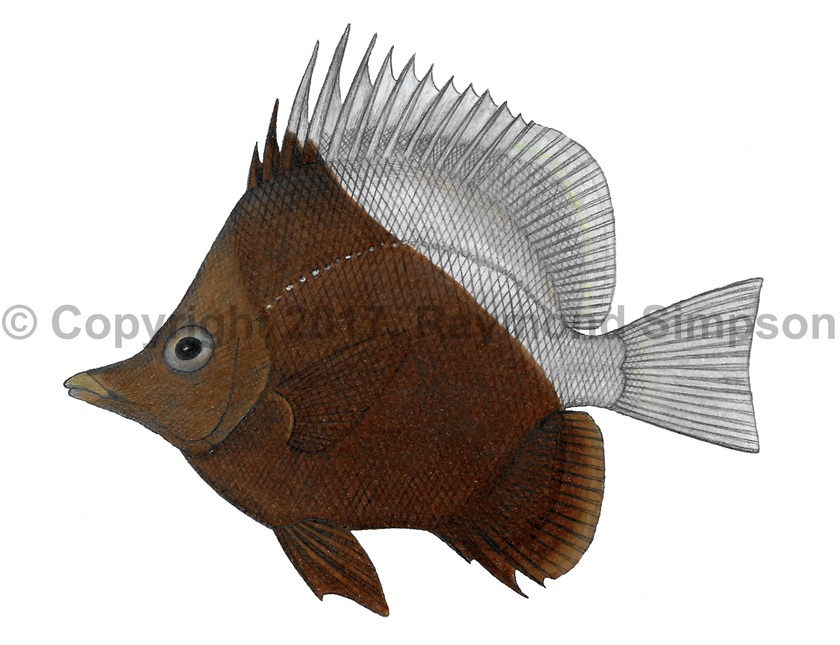
Common Name
Oblique Butterflyfish
Year Described
Lubbock & Edwards, 1980
Identification
Dorsal Fin: XII, 19-20
Anal Fin: III, 14-15
Pectoral Fin: 15
Lateral Line Scales: 35-36
Body oval and highly compressed. Body asymmetrical with a more rounded upper profile and a more flattened lower profile. Nape strongly concave. Snout long with a medium sized terminal mouth. Slender teeth in jaws in several rows. Preopercular edge lacks spines. Dorsal spines enlarged with deep notches in between spines. Soft dorsal and anal fin rounded. Third anal spine longest. Caudal fin evenly rounded to truncate. Pelvic fins thin and almost reach anus. Pectoral fin under angle of opercle. Lateral line arched in front but incomplete. Axillary scale present. Body, head, and most of median fins scaled.
Color
Most of body uniformly chocolate brown with the rest being cream colored. The area of demarcation being a oblique boundary running from the spiny dorsal base to the caudal peduncle. Markings very consistent and no other markings present.
Size
Maximum size to 15cm SL. Usually 9-11.5cm SL.
Habitat
Deep mesophotic reefs from 30-120m with maximum depth of 155m. Most common under 60m.
Range
Endemic to St. Paul's Rocks, Brazil.
References
Lubbock, R. & A. J. Edwards. 1980. A new butterflyfish (Teleostei: Chaetodontidae) of the genus Chaetodon from Saint Paul’s Rocks. Revue française d’Aquariologie Herpétologie v. 7 (no. 1): 13-16.
Nunes, L. T., Cord, I., Francini-Filho, R. B., Stampar, S. N., Pinheiro, H. T., Rocha, L. A., & C.E. Ferreira. 2019. Ecology of Prognathodes obliquus, a butterflyfish endemic to mesophotic ecosystems of St. Peter and St. Paul’s Archipelago. Coral Reefs, 38(5), 955-960.
Other Notes
A very distinctive species found only at one Brazilian oceanic island. It’s closest relative lives around Ascension and St. Helena (Prognathodes dichrous) and has the same color pattern except for the latter has a square patch of white instead of an oblique patch of white.